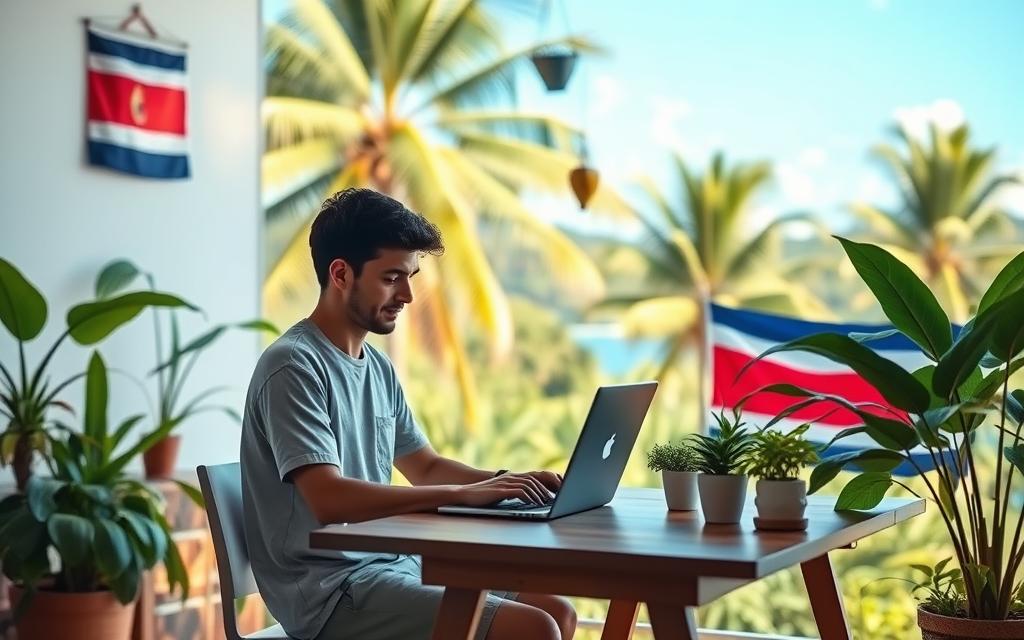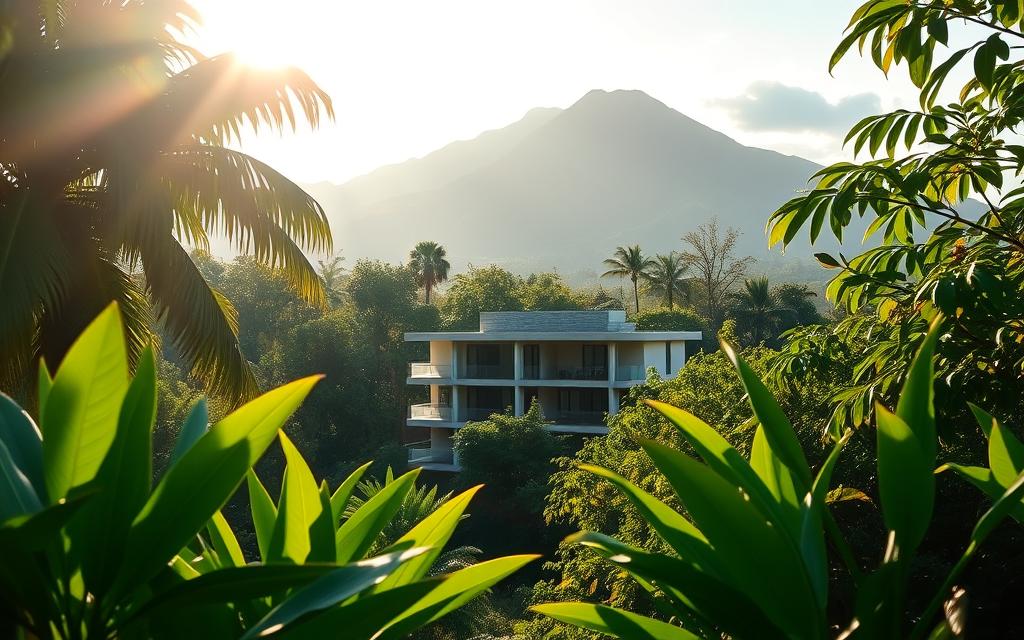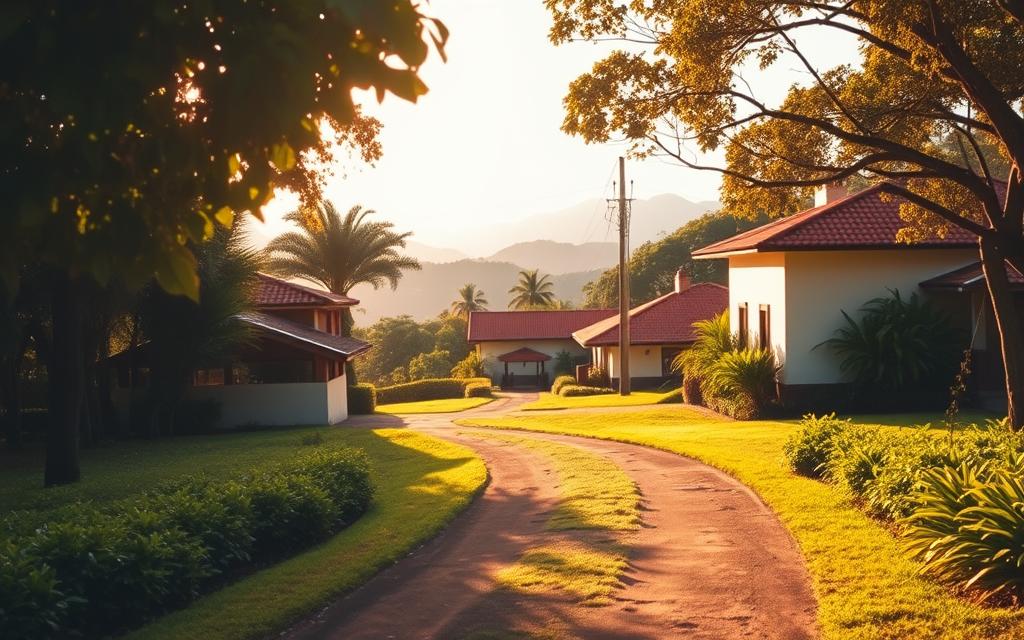How Long to Become a Permanent Resident of Costa Rica

Costa Rica has emerged as a top destination for individuals and families seeking a better quality of life and new opportunities. With its natural beauty, mild climate, and rich culture, this Central American country offers a unique blend of business opportunities and a high standard of living.
We will explore the complete timeline and process for becoming a permanent resident in Costa Rica. The country's residency process is streamlined, allowing applicants to obtain resident status within 9 to 12 months. Whether through completing three years as a temporary resident or through family connections to Costa Rican citizens, understanding the different pathways to permanent residency is crucial.
Costa Rica as a Residency Destinatio
Costa Rica has emerged as a top destination for individuals seeking residency abroad. Its unique blend of natural beauty, modern amenities, and a welcoming environment makes it an attractive choice for expats, retirees, and investors.
Why Costa Rica Attracts Expats
Costa Rica offers a variety of residency options tailored to the needs and circumstances of applicants. Among the most common options are rentista residency for those with stable income, investment residency for business investors, and permanent residency for those who wish to live indefinitely in the country. The country's immigration system is designed to attract a diverse group of individuals.
Overview of the Costa Rican Immigration System
The Costa Rican immigration system, administered by the Dirección General de Migración y Extranjería (DGME), oversees all residency applications and immigration matters. It operates on a two-tier approach, requiring temporary residency for typically three years before applying for permanent status. Recent updates have streamlined processes, including the introduction of a digital nomad visa. Understanding the distinction between temporary and permanent residency is crucial for planning your immigration journey. All applicants must also register with the Caja Costarricense de Seguro Social (CCSS), the national healthcare system.
By understanding the requirements and options available, individuals can make informed decisions about their residency in Costa Rica. The country's immigration framework is designed to be inclusive, catering to various needs while maintaining control over who becomes a permanent resident.
Types of Residency Options in Costa Rica

The Costa Rican government provides several pathways to residency, catering to different needs and circumstances. Understanding these options is essential for individuals looking to make Costa Rica their home.
Temporary Residency Categories
Temporary residency in Costa Rica is designed for individuals who intend to stay in the country for a specific period. This category includes various subcategories such as rentista (for those with a guaranteed income from abroad), pensionado (for retirees), and trabajador (for employees). To qualify, applicants must meet specific requirements, including proof of income, health insurance, and background checks.
Permanent Residency Status
After holding a temporary residence permit for at least three years, individuals may qualify for permanent residency. This status offers greater stability, with renewals required only every five years. Permanent residents have the right to work without additional permits and must register with Costa Rica's public healthcare system. To maintain their status, permanent residents should not remain outside Costa Rica for more than two consecutive years.
Permanent residency is granted on an individual basis, and each family member must qualify and apply separately. After seven years of maintaining permanent residency, individuals become eligible to apply for Costa Rican citizenship, which requires passing a test on Costa Rican history and demonstrating Spanish language proficiency.
Pathways to Permanent Residency

For those seeking to make Costa Rica their home, there are distinct pathways to achieve permanent residency status. Costa Rica's immigration system is designed to be inclusive, offering various routes that cater to different applicant profiles.
After Three Years of Temporary Residency
One common pathway to permanent residency is through the temporary residency category. After maintaining temporary residency for three consecutive years, individuals can apply for permanent residency. This pathway requires continuous residence in Costa Rica and adherence to the country's immigration laws. It's essential to ensure that your temporary residency is properly documented and up to date to be eligible for this pathway.
Applicants should be aware that the process involves submitting an application and supporting documents to the relevant authorities, demonstrating their commitment to residing in Costa Rica.
Through Family Connections to Costa Rican Citizens
Another significant pathway to permanent residency is through family connections, specifically under the "Residencia Permanente Por Vinculo" category. If you have a first-degree blood relative who is a Costa Rican citizen, you may qualify for direct permanent residency. Qualifying relationships include being a parent, child, or sibling of a Costa Rican citizen.
This pathway allows applicants to bypass the temporary residency stage, though it requires stringent documentation to establish the family relationship. Documents such as birth certificates must be properly authenticated and translated into Spanish. This pathway is particularly beneficial for families with children born in Costa Rica, as those children are automatically considered Costa Rican citizens, potentially qualifying their immediate family members for direct permanent residency.
Requirements for Permanent Residency

The journey to permanent residency in Costa Rica necessitates a thorough grasp of the necessary documents and financial commitments. As we navigate the process, it's crucial to understand the multifaceted requirements that applicants must fulfill to successfully obtain permanent residency in Costa Rica.
Document Requirements
To initiate the application process, prospective permanent residents must gather and submit several key documents. These include authenticated copies of identification, proof of income, and other relevant paperwork. For instance, applicants may need to provide a valid passport, birth certificate, and police record. It's also essential to have these documents translated into Spanish, as part of the authentication process. For more information on the authentication process and required documents, such as the DIMEX card, visit our guide on DIMEX identification cards.
Ensuring that all documents are properly authenticated and translated is a critical step. The costs associated with document authentication can range from $50 to $200 per document, and translation services may cost between $20 to $50 per page. Therefore, it's vital to budget accordingly to avoid any delays in the application process.
Financial and Legal Requirements
Apart from document preparation, applicants must also meet specific financial and legal obligations. This includes registering with the Costa Rican Social Security system (CCSS or "Caja") and making monthly payments based on declared income, which can range from $75 to $300. Additionally, there are government filing fees for permanent residency, approximately $200, plus a fee for the DIMEX identification card, around $123.
Applicants must be in good standing with all Costa Rican government institutions, including tax authorities and the social security system, with no outstanding debts or legal issues. Demonstrating integration into Costa Rican society may also be assessed during the application process. For family-based applicants, proof of financial dependency for certain relatives may be required. Maintaining a local address in Costa Rica and updating immigration authorities as necessary is also mandatory.
How Long Does It Take to Become a Permanent Resident of Costa Rica?

For those looking to make Costa Rica their home, understanding the timeframe for obtaining permanent residency is essential. Costa Rica provides a streamlined path to residency, allowing applicants to obtain resident status within 9 to 12 months. The process involves several steps, and the timeline can vary based on the pathway chosen.
Timeline for the Temporary-to-Permanent Path
The temporary-to-permanent residency path involves initially applying for temporary residency, which can be valid for up to 3 years. After maintaining temporary residency for the required period, typically 3 years, applicants can then apply for permanent residency. This pathway can take around 4 to 5 years in total.
Timeline for Direct Permanent Residency
For those qualifying through first-degree family relationships to Costa Rican citizens, the direct permanent residency application process is significantly faster. The process typically takes 6-10 months from submission to approval. Document preparation is crucial and can take 1-3 months. After submission, the immigration authorities review the application, a process that takes 4-6 months. Following approval, applicants must complete the DIMEX card process and Caja registration, adding about 1 month.
Working with experienced immigration professionals, such as those found at Jaros CR, can help ensure the application is properly prepared, potentially reducing delays caused by document errors or omissions.
The Permanent Residency Application Process
Navigating the permanent residency application process in Costa Rica can be complex, but understanding the steps involved can simplify the journey. As we explore the requirements and procedures, it's essential to break down the process into manageable parts.
Step 1: Document Preparation and Authentication
The first step in the permanent residency application process involves preparing and authenticating the necessary documents. This includes gathering various legal documents, such as birth and marriage certificates, and having them authenticated or apostilled. Ensuring that all documents are correctly prepared and authenticated is crucial for a smooth application process.
Step 2: Application Submission
Once all documents are prepared, the next step is to submit the application to the relevant authorities in Costa Rica. This involves filling out the required application forms, attaching the prepared documents, and paying the necessary fees. After submission, applicants must attend an appointment at the DGME for biometric data collection, including fingerprints and photographs for the DIMEX identification card.
Step 3: Biometrics and Interview
Following application submission, applicants are required to attend a biometrics appointment, which typically occurs 2-4 weeks later. During this appointment, they provide fingerprints and other biometric data. Some applicants may also be required to attend an interview with immigration officials, particularly in family-based cases or if there are questions about the application. After the biometrics appointment, the application undergoes a substantive review, which includes verification of all submitted documents and background checks.
Upon approval, applicants receive notification and must pay the required fees to obtain their permanent resident DIMEX card. It's also mandatory to register with the Costa Rican Social Security system (Caja) within 30 days of approval. By understanding these steps, applicants can better navigate the residency application process in Costa Rica.
Costs Associated with Permanent Residency
When applying for permanent residency in Costa Rica, it's essential to understand the various costs involved. The total expense goes beyond the initial application fee, encompassing government charges, professional services, and other related expenditures.
Government Fees and Expenses
The government fees for permanent residency in Costa Rica include the application processing fee and other official charges. While the exact fee can vary, it's crucial to budget for these expenses. Our service fees are separate from these government fees and other expenses.
The application process involves costs such as legal representation by an immigration attorney, which typically ranges from $1,500 to $3,000, depending on the complexity of the case and the level of service provided.
Additional Costs to Consider
Beyond government fees, applicants should consider additional expenses. Transportation costs for visits to San José for application submission, biometrics appointments, and DIMEX card collection should be factored into the budget.
Other expenses include photocopying, notarization, and document preparation, which can add $100-$200 to the total cost. Banking fees for international transfers and potential costs for obtaining additional documents during the application review process should also be considered.
Legal Assistance for Residency Applications

Costa Rica's immigration laws require careful handling, making legal assistance invaluable. Professional help doesn't just save time—it provides peace of mind knowing your permanent residency application is being handled correctly from start to finish.
Benefits of Hiring an Immigration Attorney
Hiring an immigration attorney can significantly simplify the residency application process. They help navigate language barriers, complex document authentication, and frequently changing immigration regulations. With their expertise, you can avoid common pitfalls such as application rejection due to technical errors.
What to Look for in Legal Representation
When selecting legal representation, look for attorneys specializing in Costa Rican immigration law. Consider their experience, particularly with cases similar to yours. Ensure they offer clear communication and are transparent about their costs. Verify their licensure with the Costa Rican Bar Association. For reliable services, visit Jaros CR for expert guidance on your residency application.
Maintaining Your Permanent Resident Status
To keep your permanent resident status in Costa Rica, certain conditions must be met. Understanding these requirements is essential to avoid any complications that could jeopardize your residency.
Renewal Requirements
Permanent residents in Costa Rica are required to renew their DIMEX card periodically. Although there's no specific renewal timeline based on a fixed interval like temporary residency, it's essential to ensure your DIMEX card remains valid. For information on related processes, such as dual citizenship, visiting the official government or related websites can provide valuable insights.
Travel Restrictions and Considerations
Permanent residents should be mindful of their travel outside Costa Rica. While brief trips abroad are permissible, staying outside the country for more than two consecutive years can risk your residency status. It's advisable to maintain ties to Costa Rica, such as property or utility bills, to demonstrate your commitment to residency. When traveling, carrying a valid DIMEX card along with your passport is recommended for smooth re-entry into Costa Rica.
Conclusion: Is Permanent Residency in Costa Rica Right for You?
For those drawn to Costa Rica's 'Pura Vida' lifestyle, understanding the process and benefits of permanent residency is crucial. Permanent residency in Costa Rica offers significant benefits, including legal work authorization, simplified travel, and access to the national healthcare system.
As you consider your long-term plans, it's essential to weigh factors such as financial situation, family needs, and comfort with Costa Rican culture. For many, the stable democratic environment, high quality of life, and natural beauty make Costa Rica an ideal choice.
Permanent residency serves as a stepping stone to Costa Rican citizenship for those interested in dual nationality, requiring proficiency in Spanish and knowledge of Costa Rican history and culture.
Before beginning the application process, prospective residents should research their situation, consider consulting immigration professionals, and potentially visit Costa Rica to ensure it's the right fit. With patience and attention to detail, the path to residency can lead to a rewarding new chapter in this beautiful Central American country.


